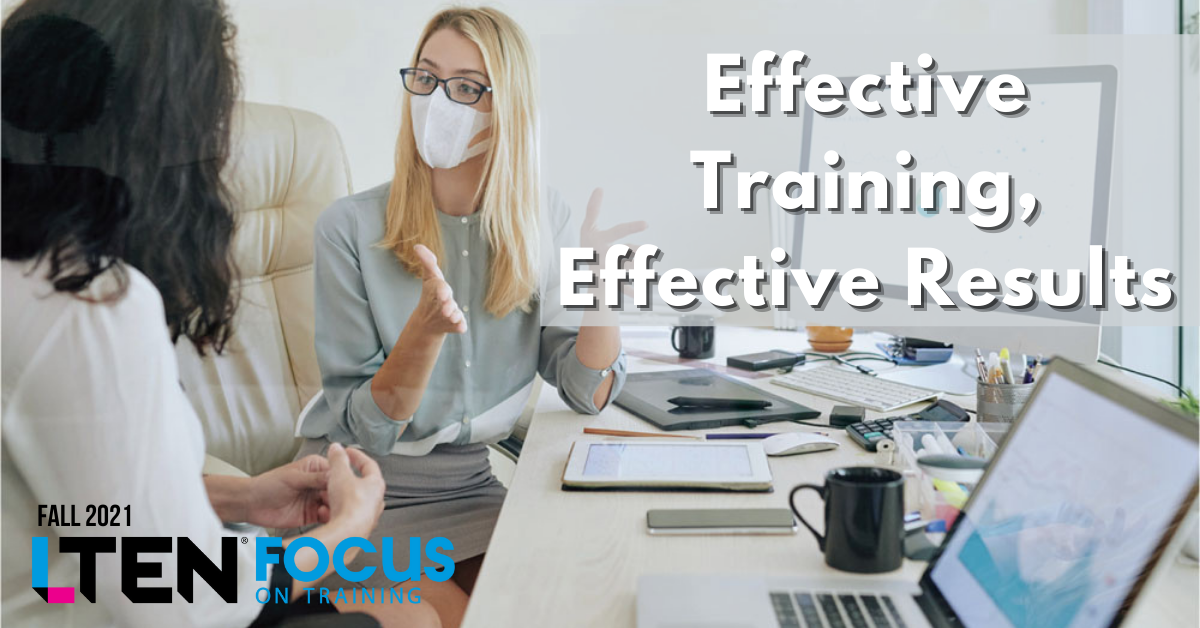
Effective Training, Effective Results
Feature Story – By Danielle Duran
A training strategy creates a pathway to success
Human assets are the most valuable resource within any organization. We are built to learn and programmed to be motivated to succeed and contribute to a meaningful goal, greater than our individual selves. Our innate drive to grow and improve will bring high performance to any organization.
How often do you or your teammates feel that your growth is contributing to the success of your area? How much time are you or your teammates allocating to your learning and continuous improvement?
More importantly, how much of the learning and continuous improvement is targeted toward achieving specific objectives? How is it measured? How is it prioritized? To what extent is it tied to business objectives and the goals of the local business unit or even the corporate goals?
A path to answer each of these questions cannot be found in a short article, but we can discuss taking initial steps toward being able to meaningfully answer them and starting on the development of a learning strategy to get there. This framework is based on the well-known Kirkpatrick model, flavored with some lean plan-do-check-act, all informed by Kolb’s learning cycle.
 Strategy Framework
Strategy Framework
We all know to start with the end in mind. Define the learning objectives of what a learner must be able to do. Verify you have determined what must be different because of the training or learning experience. Ensure you are not committing the common error of the goal being centered on actions by the trainer, or an activity being completed.
Following the framework defined below, you can ensure that not only will you have clear goals, but a pathway to ensuring the impact is enduring and tied to bigger-picture aims. Also, that you and others are prepared for the required work.
Phase 1 – Define
We know to start with the end in mind, but the granularity of specificity will determine the clarity of the destination. The primary focus of this phase is to ensure you determine what must be different (in terms of target learners’ behavior, and therefore the knowledge and skill required to execute those behaviors reliably and without support) after the learning experience, along with a clear picture of how it is specifically different from the current state.
To ensure you know when you reach that end, you must define how you know the learning worked. What will you observe? What can you measure? How will you assess?
The advanced execution would include ensuring the “what will be different” question is answered not only by learner behavior, but in the impact to the business by changing those behaviors.
 Phase 2 – Design
Phase 2 – Design
Once the North Star has been identified, you must chart your course for the journey. During this phase you must plan for developing the competencies you identified as priority to change your targeted behaviors. This includes clearly defining the resources required, and surveying what is currently available that you could deploy.
Your plan should include the preparation required to deliver the learning experience, including the trainers you will need to prepare and the time it will take to deliver the training and prepare the trainers, and any process to request said resources. As you prepare yourself to prepare the trainers, be just as thoughtful about the expectations and responsibilities before, during and after the training. As you defined in Phase 1 how you will demonstrate the learning transfer has occurred or how what you expect to observe in behavior change, consider how you will design into the plan when you gather this evidence.
Phase 3 – Deploy
As you deliver the training and learning experiences, consider how you will gather and collate any data you will use to validate its effectiveness. Consider also how you might identify trends along the way and adjust where possible. Consider how you might want to share this data with your learning colleagues, the learners themselves and their managers if appropriate.
Finally, how will you summarize the impact in the near term, and how you will report back on impact later when you have gathered the behavioral change data?
Phase 4 – Validate and Sustain
Part of the plan you began in Phase 2 will include a skeletal idea of how you will allocate time to analyzing results, how you will allocate time to planning how you will sustain this learning for current learners and how you will sustain the process for personnel new to the area.
You will need to compare the post-training results to the data gathered at the “current state” in Phase 1 and compare to the intended goals. Determine what may need to be done differently or if an adjustment to the current plan needs to be made if data incoming from the deployment requires such adjustment.
Your Application
These phases can be leaned out to meet less complex needs or followed for the purpose of ensuring the big rocks of each phase are complete. Or for more robust changes that require a significant learning strategy, there are many more layers or tools to consider.
The purpose of this is to paint a picture of what should be considered as you plan out your learning strategy. Ensure it’s effective and has validated evidence that it worked and ensure all are prepared to participate along the way.
Considering these questions and planning out this strategy is one way to harness the power of learning and continous improvement that your people want to bring each day.
Danielle Duran is the head of GxP training at Aimmune, a Nestle Health Sciences
company. Find her on LinkedIn at https://www.linkedin.com/in/danielleduran/.








